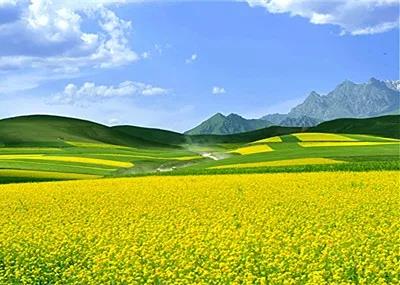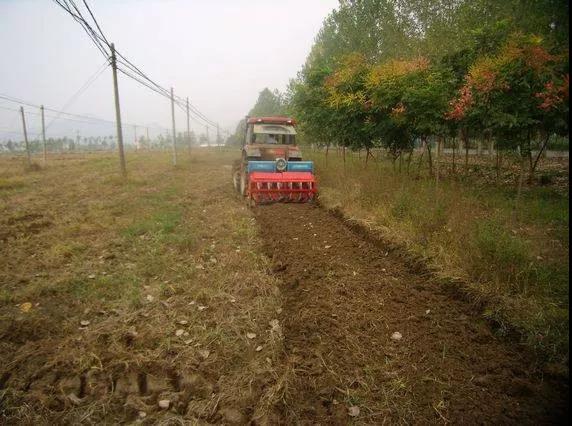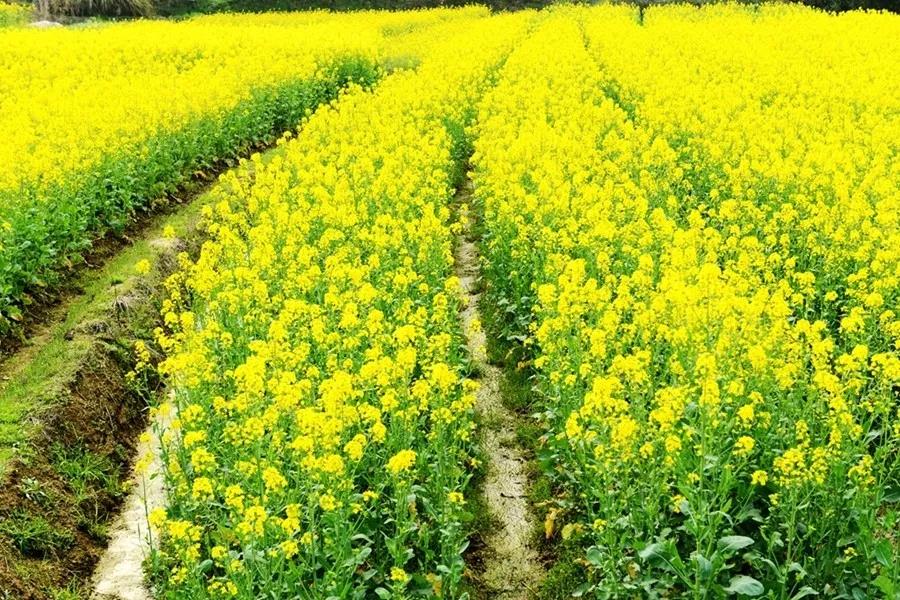(1) Depending on local conditions, the suitable areas should be selected.
According to the natural conditions and planting system of different regions, under the premise of mechanized production, the high-yield, high-oil, suitable machine-receiving rapeseed varieties suitable for the region should be selected according to local conditions. Among them: the middle and lower reaches of the Yangtze River have a high incidence of sclerotinia disease for many years, especially paying attention to the selection of antibacterial nuclear disease; the southwestern region is the area where the clubroot disease occurs, pay attention to the selection of new varieties resistant to clubroot disease, and adopt the postponed sowing (planting) period and Soil improvement, reduce the occurrence of clubroot disease; the lower reaches of the Yangtze River should use high-yield and high-oil varieties resistant to late sowing and antibacterial nuclear diseases. Rice-oil two-cropped live rapeseed should be selected from high-yield, high-oil, anti-reverse disease-resistant rapeseed varieties; mid-south rice-rice oil three-cropping live rapeseed and Yunnan-Guizhou plateau early-maturing rapeseed should be selected as a new disease-resistant and resistant early-ripening rapeseed Dryland rapeseed should be selected from rapeseed varieties with high yield potential, resistance to lodging and disease resistance.

(2) Grab the seeding and improve the quality of the seeding.
The meteorological department predicts that precipitation in the main producing areas of the Yangtze River may be flat or less during the autumn season. The Central and South China and Yunnan-Guizhou crude oil production areas may be less than 5% to 50%, and the temperature may be higher than in previous years. All localities should seize the favorable opportunity before and after the harvest of soil in the rice, or increase the amount of sowing, increase the amount of sowing by 20%, and promptly raking and planting and covering the soil. In the southwestern region, attention should be paid to direct seeding and seedling cultivation before the autumn rain in western China. Timely drainage should reduce the impact of waterlogging. The transplanting rapeseed is recommended to use “one hole and two plants” to increase the transplanting density, 6000-10000 plants per mu. In order to ensure the quality of seeding and emergence, it is recommended to use seed dressing or seed coating to effectively control the yellow-striped beetle, aphid, and diamondback moth. The seed treatment should strictly control the dosage according to the medication instructions, and should be dried in time after treatment to prevent the occurrence of phytotoxicity affecting the germination rate.
(3) The integration of agricultural machinery and agronomy, and promote the whole process of mechanized production.
Promote the application of new equipment such as rapeseed combined seeder, seeding drone, plant protection drone, combined harvester, and accelerate the mechanized production of rapeseed. Vigorously promote the appropriate management of soil, increase planting density, slow-release and full-nutrient fertilization, seed coating, seed fertilizer and sowing, drone fly defense and other high-quality and high-efficiency production techniques of rapeseed, realize the integration of agricultural machinery and agrochemicals, reduce chemical fertilizers and pesticides. The amount of application reduces the production cost and improves the production level and efficiency of the oil menu. For the rice oil tank production area, the rice harvester is guided to assemble synchronous straw crushing equipment to realize the comprehensive utilization of rice straw returning, increase soil organic matter, improve the quality of cultivated land, and facilitate rapeseed sowing.

(4) Scientific fertilization to promote the reduction of chemical fertilizers.
It is recommended to use a special slow release fertilizer for rapeseed, generally no need for top dressing. The amount of fertilizer applied was determined based on the soil fertility and yield target levels. Generally, rice paddy rapeseed is applied for 40-50 kg of special slow-release fertilizer per mu, and dry land rapeseed and three-cooked rapeseed are applied 35-40 kg per mu. If traditional methods are used for fertilization, generally 10-12 kg of pure nitrogen per acre, 3-4 kg of phosphorus pentoxide, 3-5 kg of potassium oxide and 0.75 kg of borax. Among them, 60% of total nitrogen and potassium fertilizers and all phosphate fertilizers and boron fertilizers are used as base fertilizers, 20%-30% of nitrogen fertilizers are used for winter premature seedlings, 10%-20% of nitrogen fertilizers and 40% of potassium fertilizers are used for fertilizers.
(5) Preventing disease and fighting disasters and ensuring high yield and stable production.
First, open the "three ditch". Do a good job in the "three ditch" of the trough, the lumbar ditch and the ditch, and timely discharge the anti-staining, and increase the depth of the ditch and dip in the low-lying fields and cold-soaked fields to eliminate the waterlogging stress. The second is to prevent pests and diseases in autumn and winter. Use acetochlor to block weeding or rapeseed selective herbicides for seedling weeding; for uncoated and seeded seeds, spray the chemicals in time to prevent cabbage caterpillars, mites and armor. The third is safe wintering. Some early-sown rapeseeds may be prosperous in winter, and should reduce the amount of topdressing and spray growth regulators to control the long-term, prevent early flowering and early flowering; the field of early-season early flowering can be combined with the "one vegetable and two-use" technology to pick the vegetable moss. increase income. The fourth is to strengthen "one to promote four defenses." In view of the increasing trend of sclerotinia sclerotior, the agents such as prochloraz or carbendazim can be mixed with potassium dihydrogen phosphate and water-soluble boron fertilizer, and foliar spray can be carried out at the bolting-priming stage.

(6) Expanding the use and improving the overall planting efficiency.
Actively promote the multi-purpose development and utilization technology of rapeseed, and realize “one-of-a-kind, multi-use” to improve planting efficiency and farmers' income. First, vigorously develop the flowering rapeseed. In the suburbs and areas with abundant tourism resources, we will develop sightseeing, leisure agriculture and beekeeping industries by planting different varieties of flowers, designing landscape patterns and extending flowering periods. The second is to develop green manure and rape. The varieties with high vegetative growth and high yield of stems and leaves are selected, and 500 grams per acre is broadcast live, and the rapeseed is crushed and returned to the field during the final flowering period. The third is to promote "dish oil and oil". The high-quality and high-yield precocious cultivars with easy-to-attack early-earning and regenerative ability are selected, and early-planted early, and the vegetable stalks of about 15 cm at the top of the main stem are taken as vegetables to increase the income of the vegetable moss. The fourth is to promote feed canola. It is advisable to use a "double low" feed rapeseed variety with low glucosinolate content, high protein content and high green feed yield. According to the feeding method and processing requirements, mechanical harvesting is carried out in the early stage of the bud stage to the formation of the pods.
Contact: Mr. Ma
Phone: +86-0374-5699688
Tel: +86-0374-5699688
Email: [email protected]
Add: Fine Chemical Industry Park, Jianan District, Xuchang, Henan, China